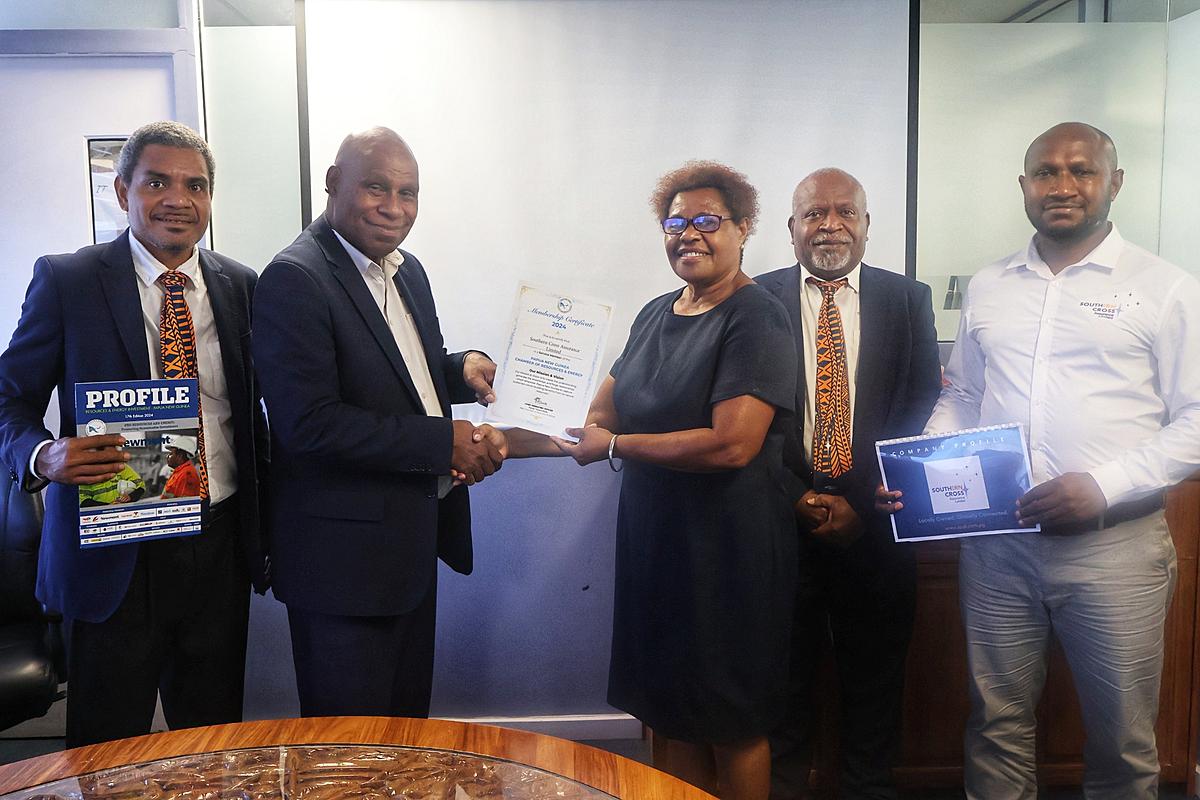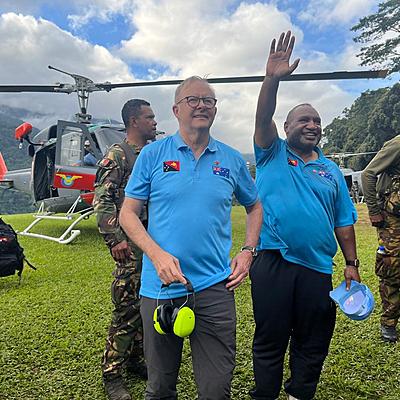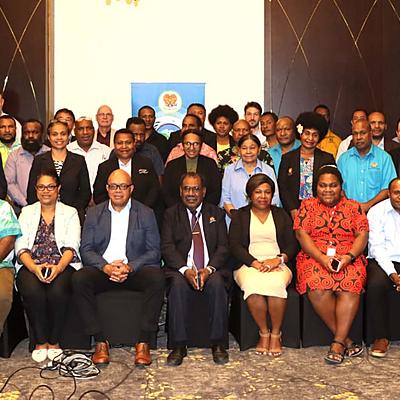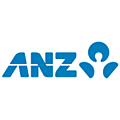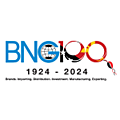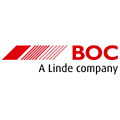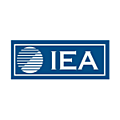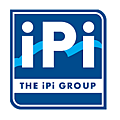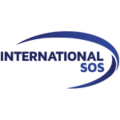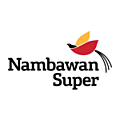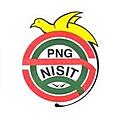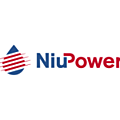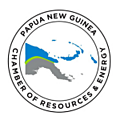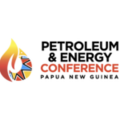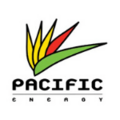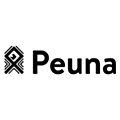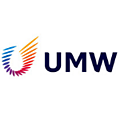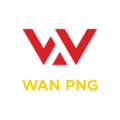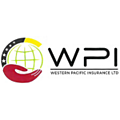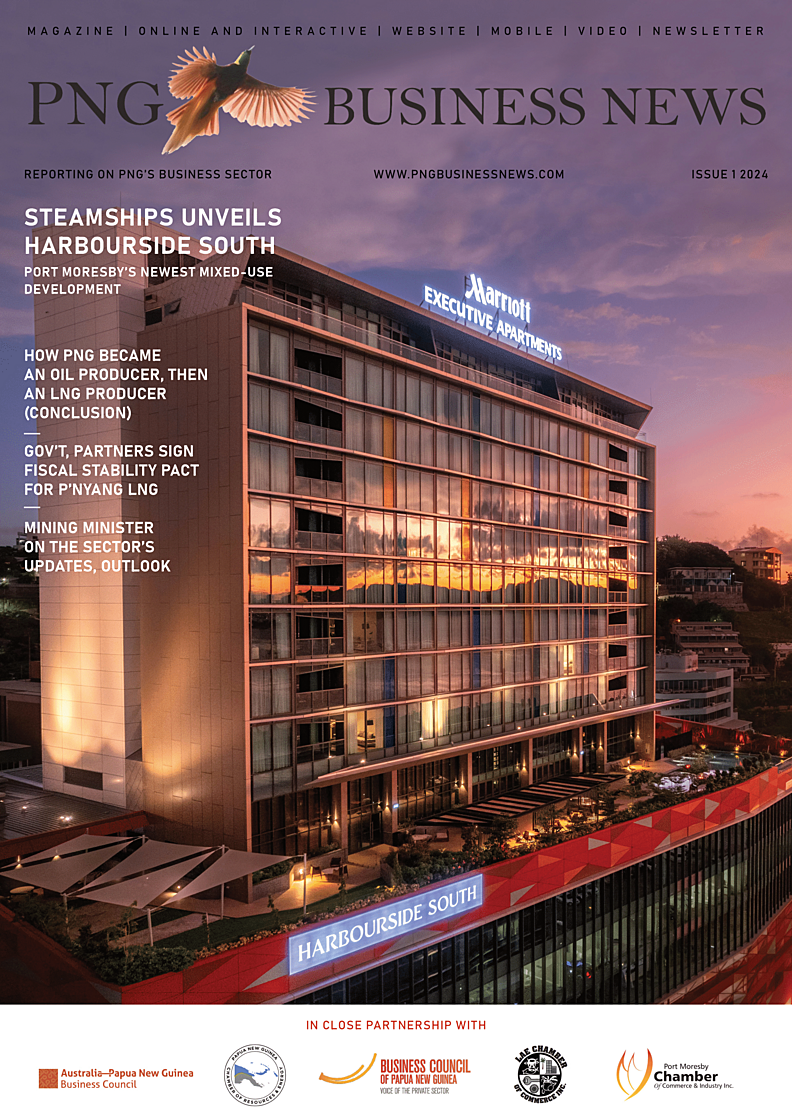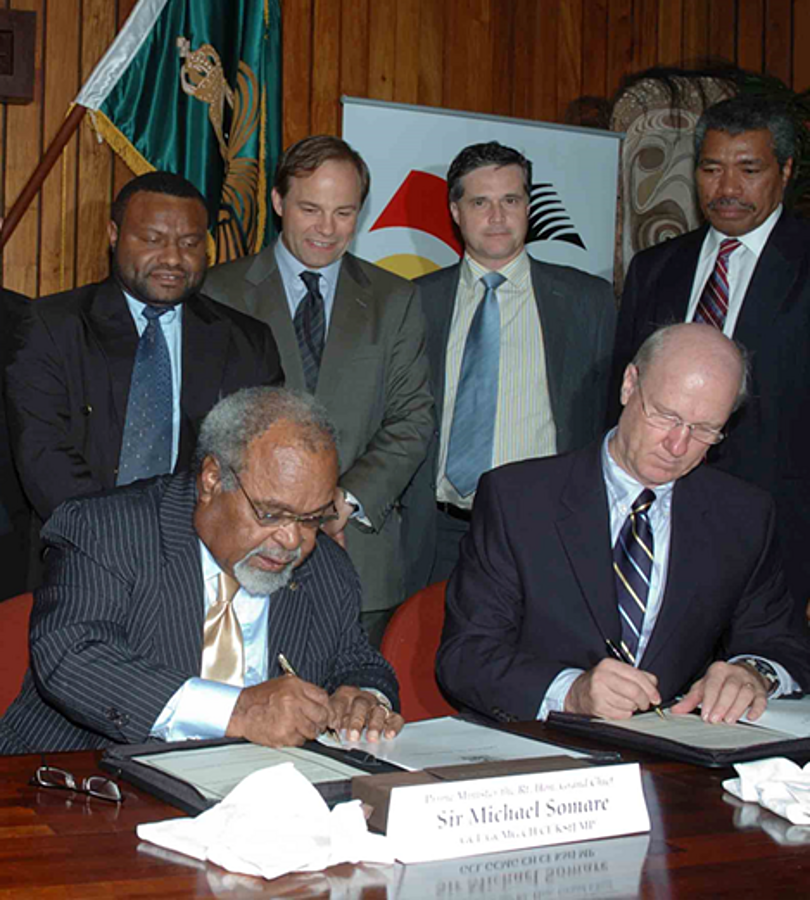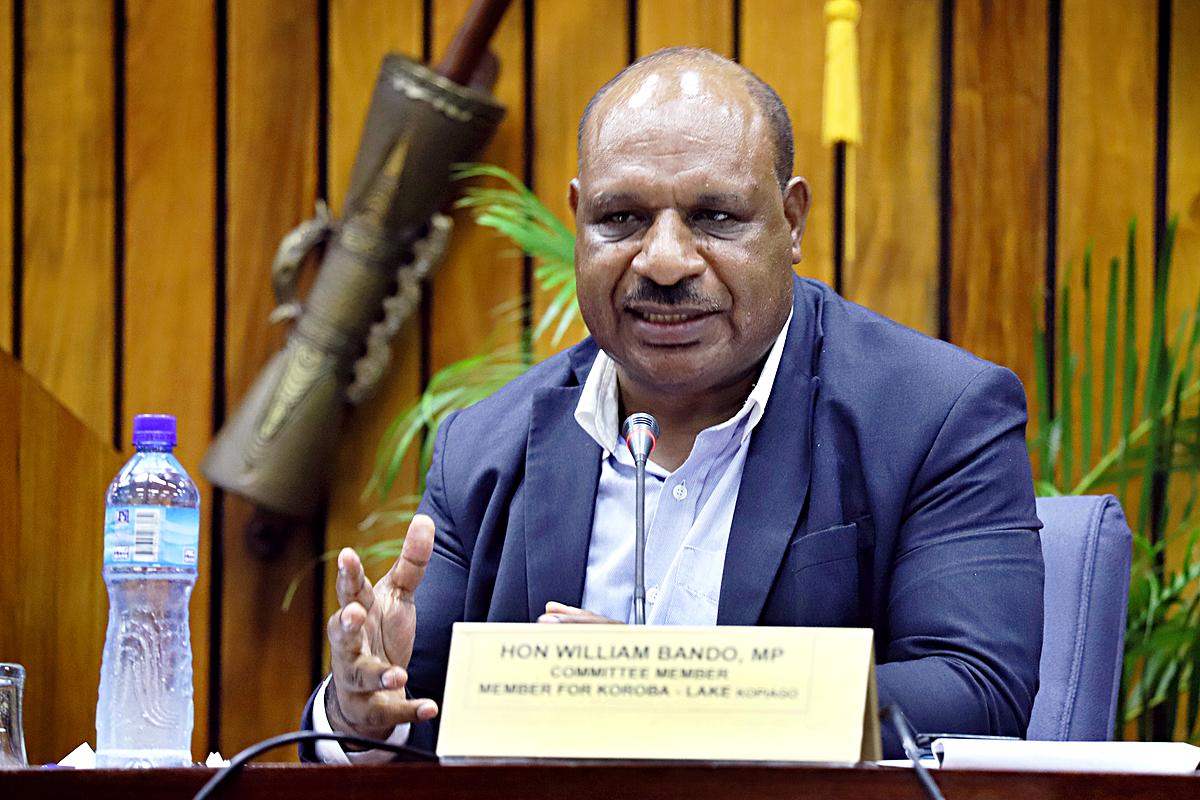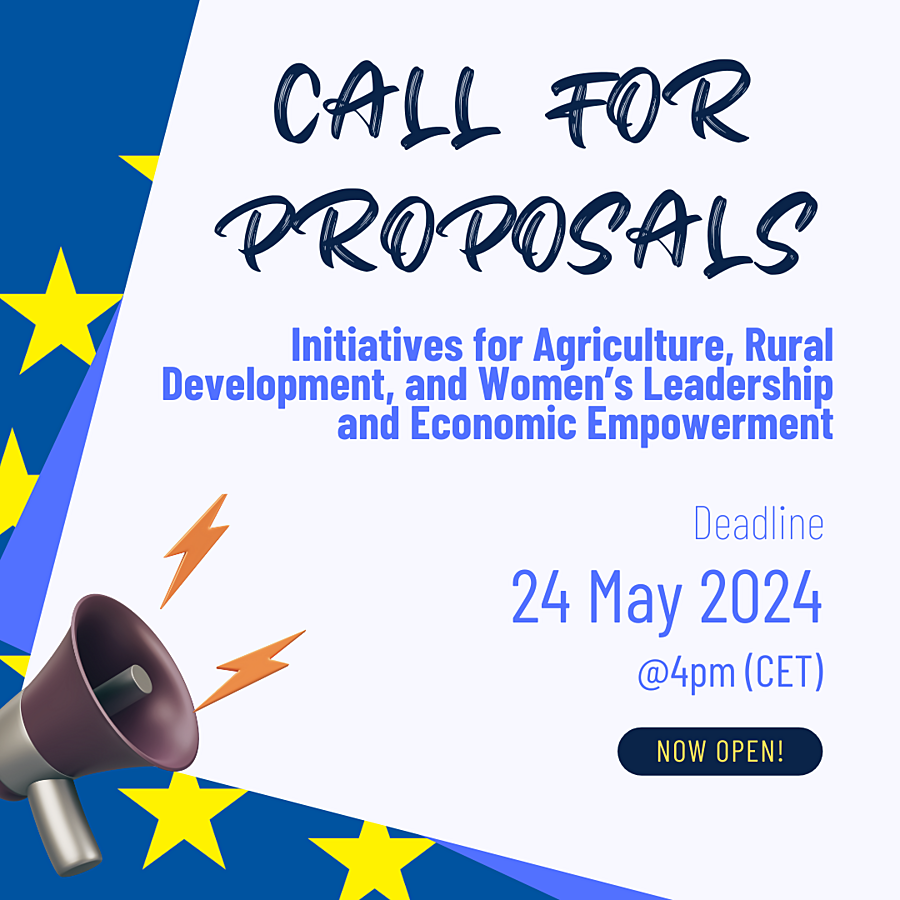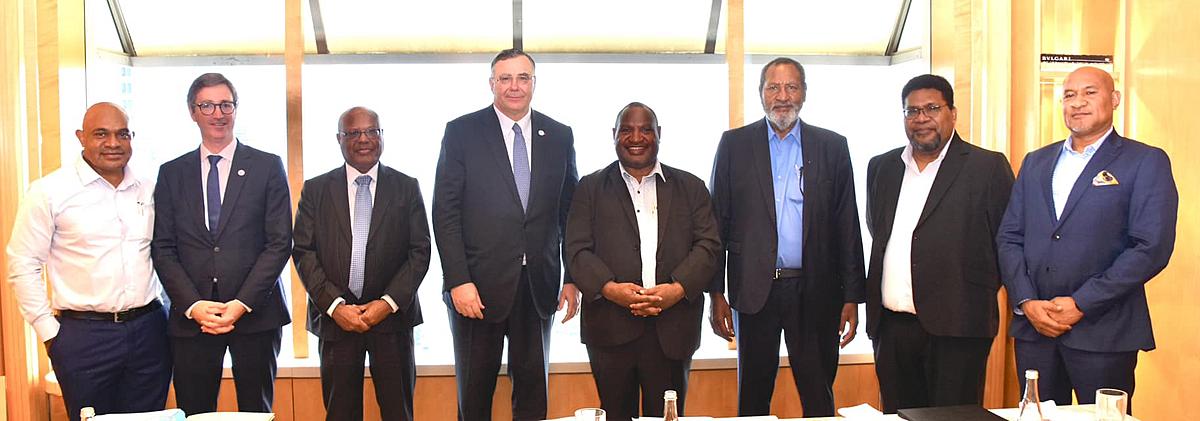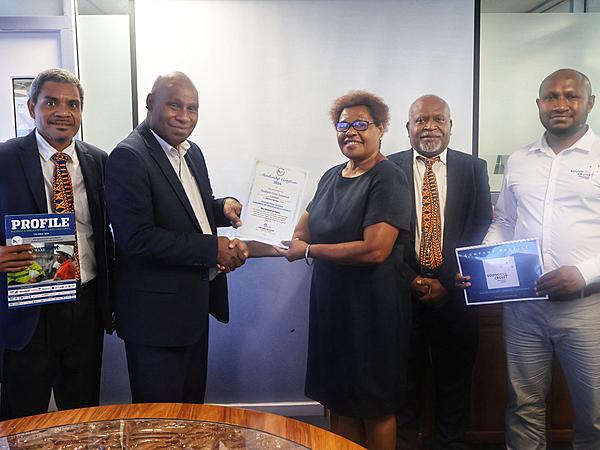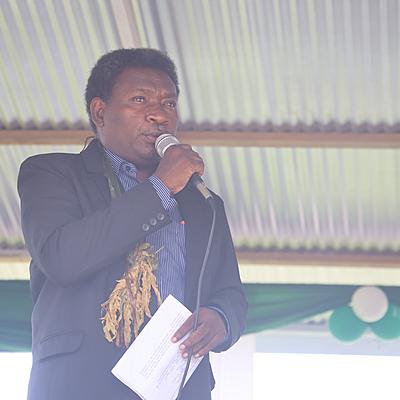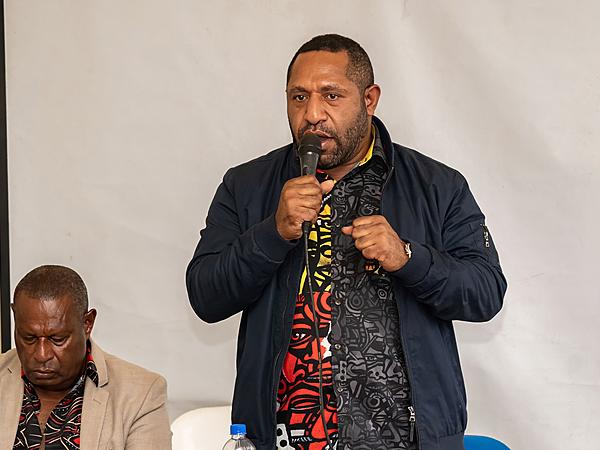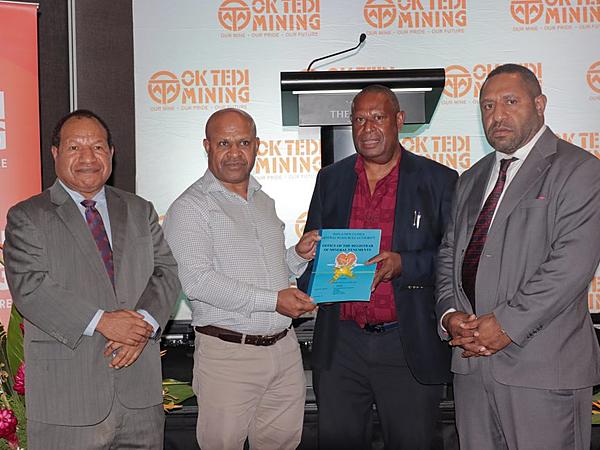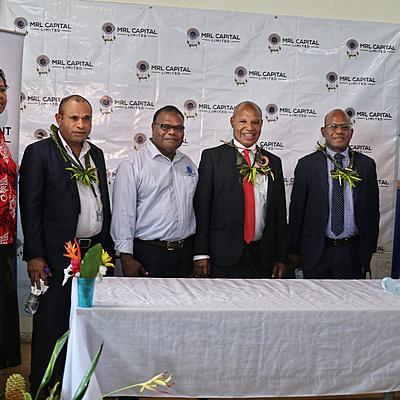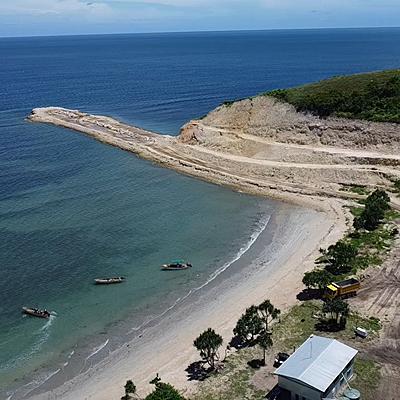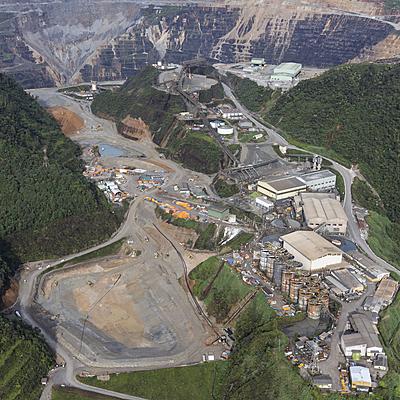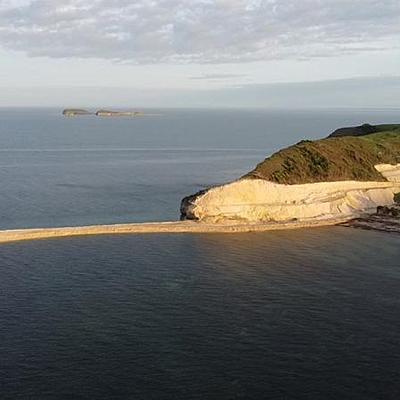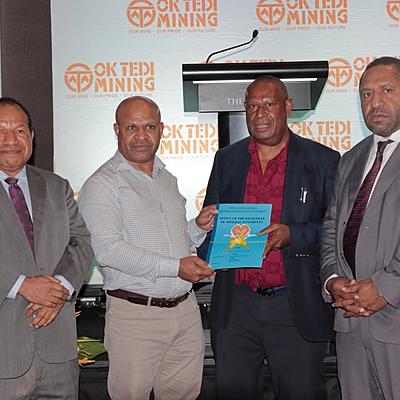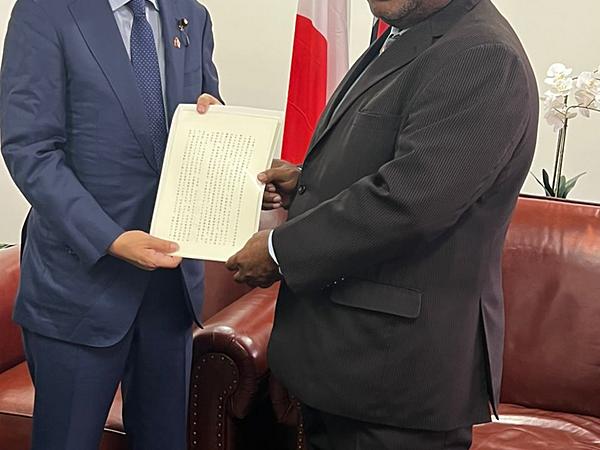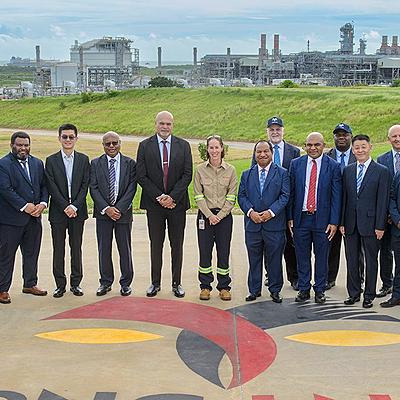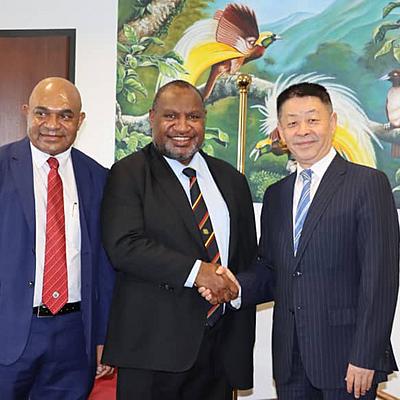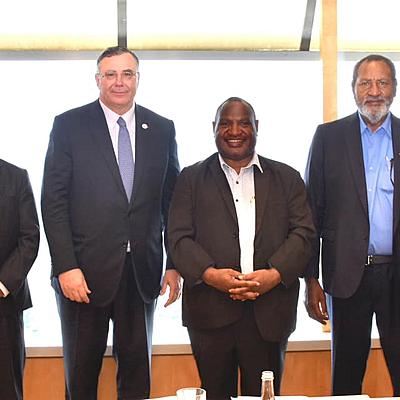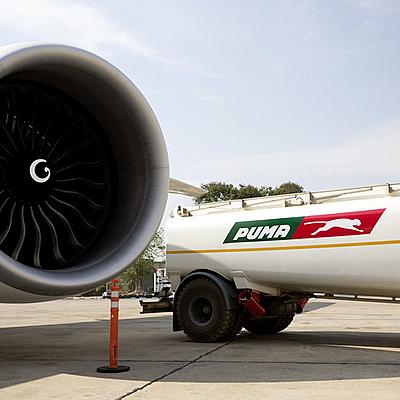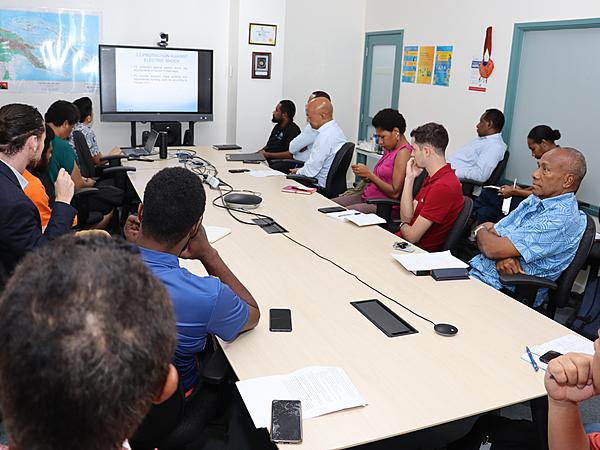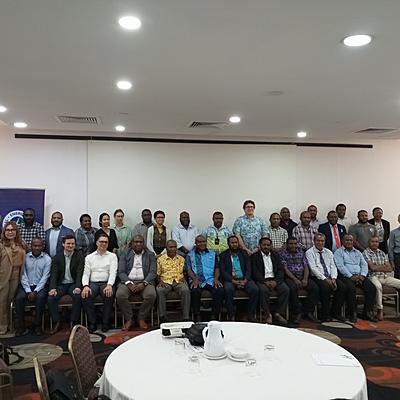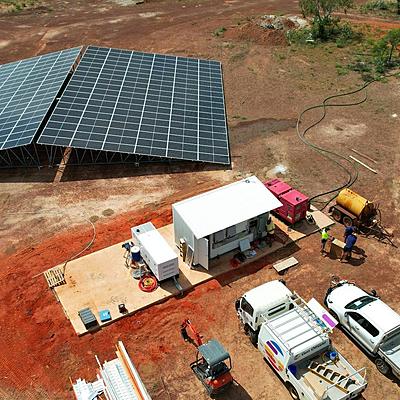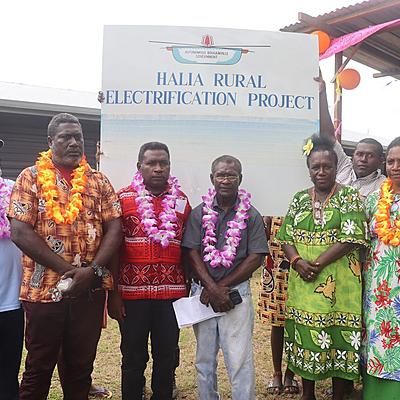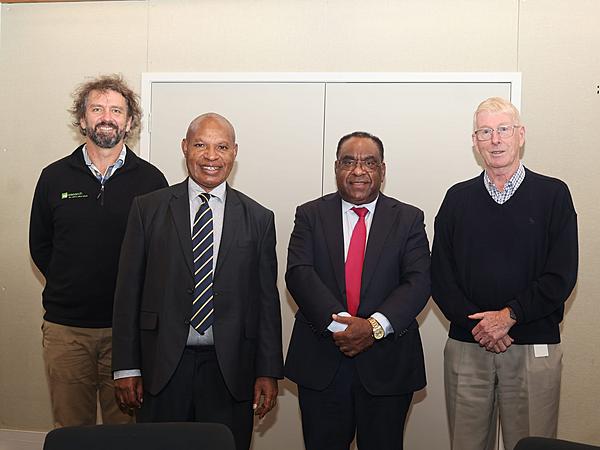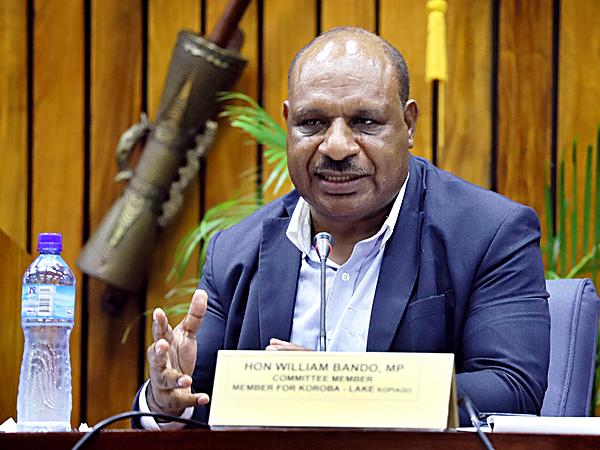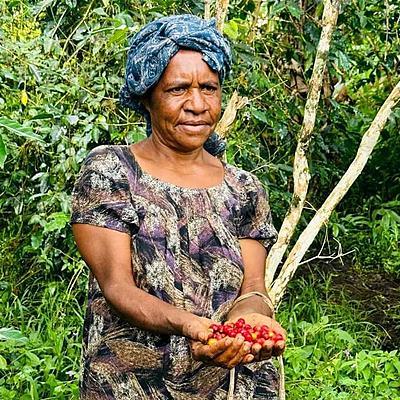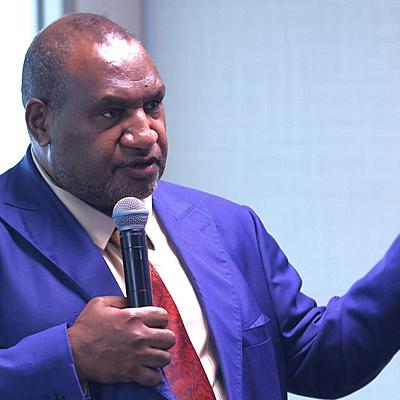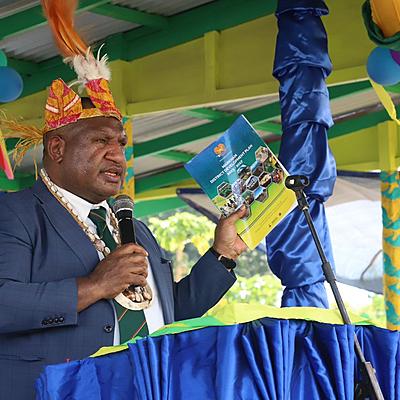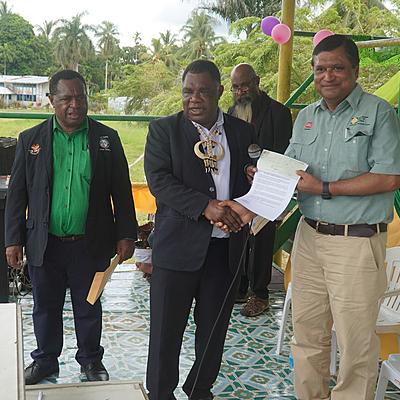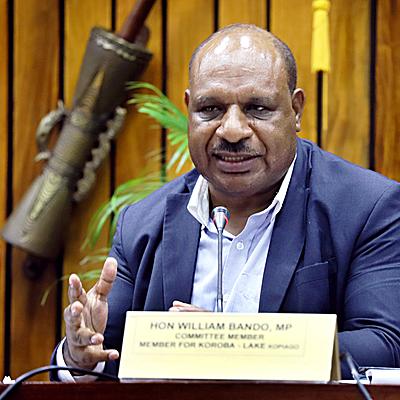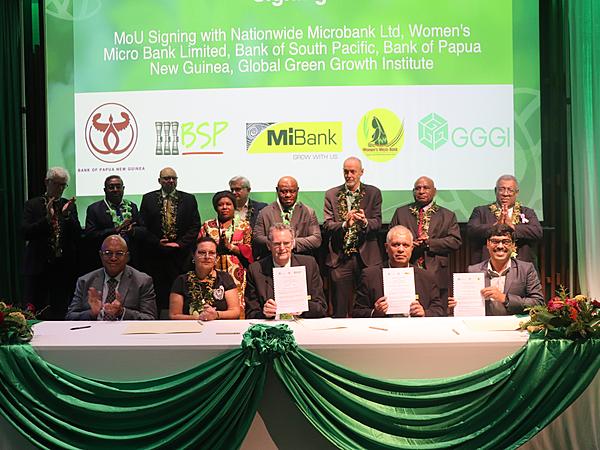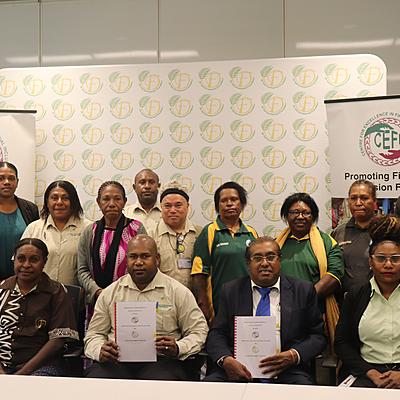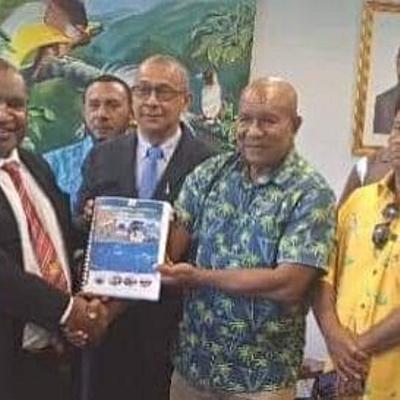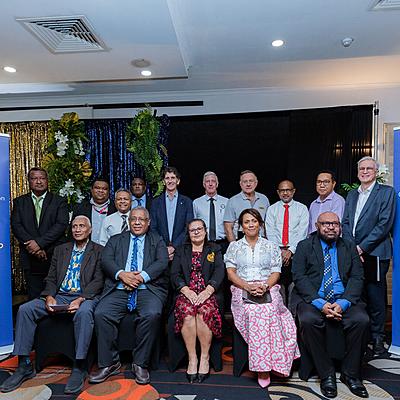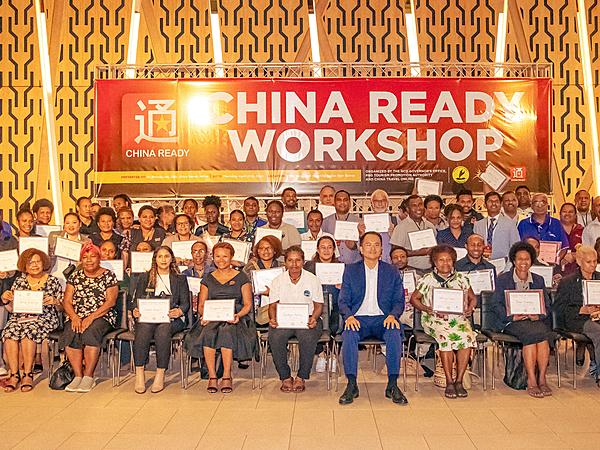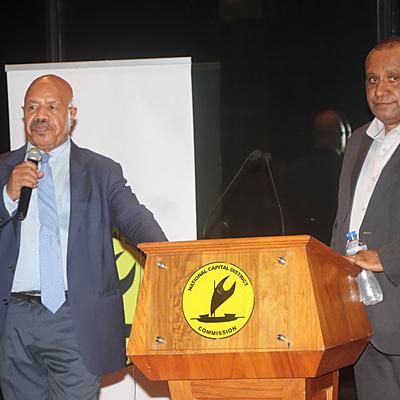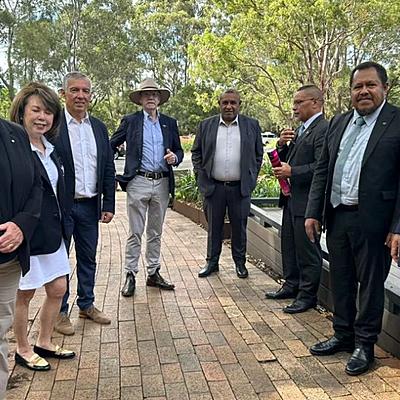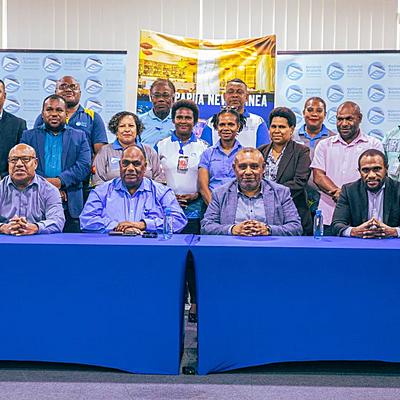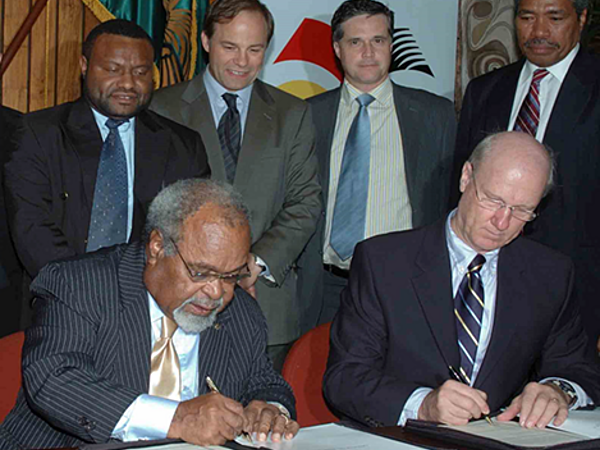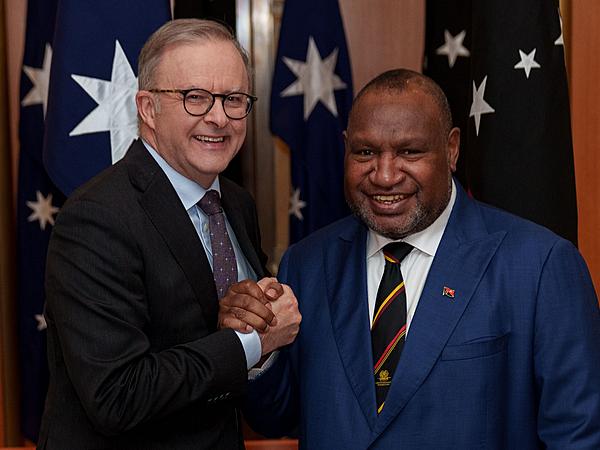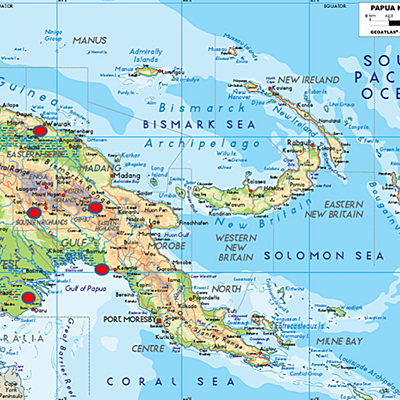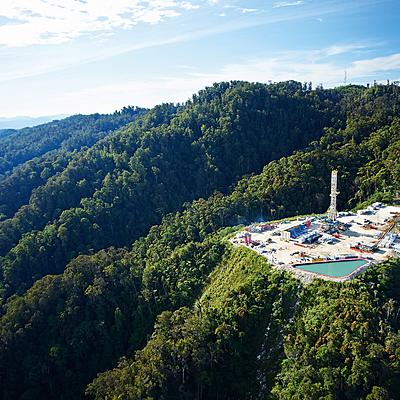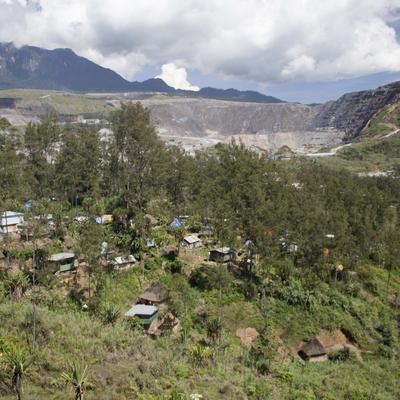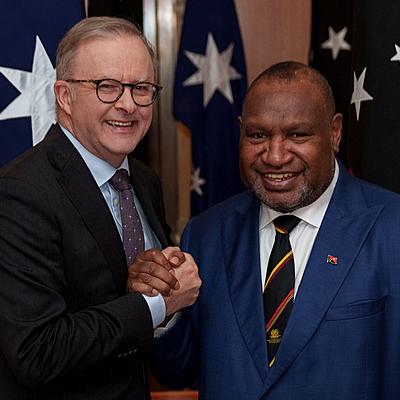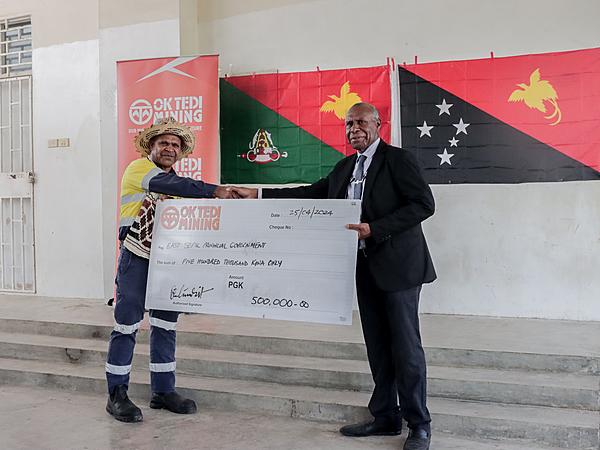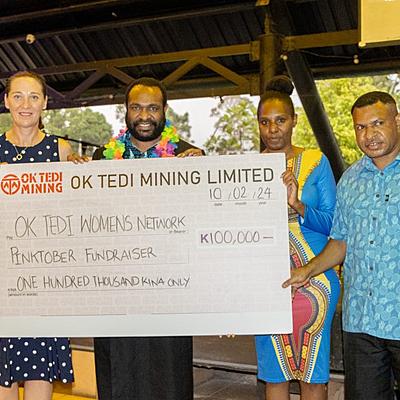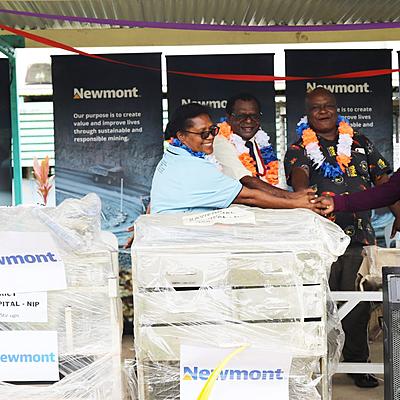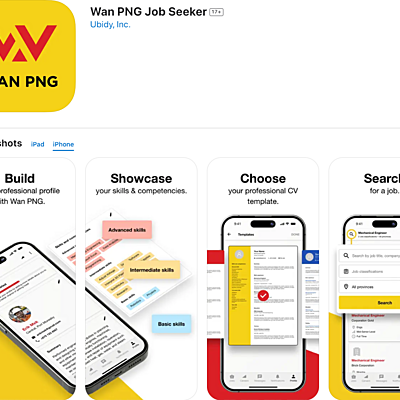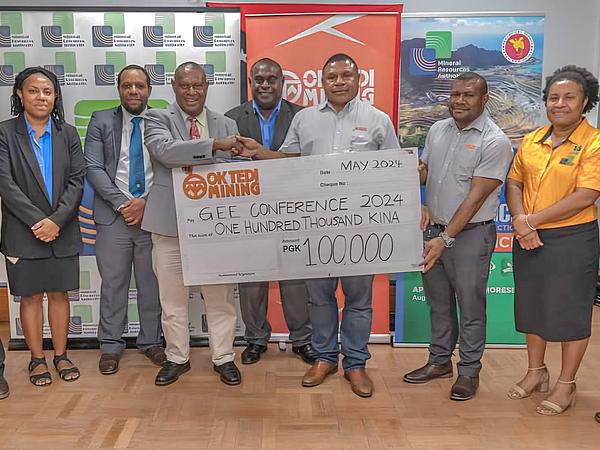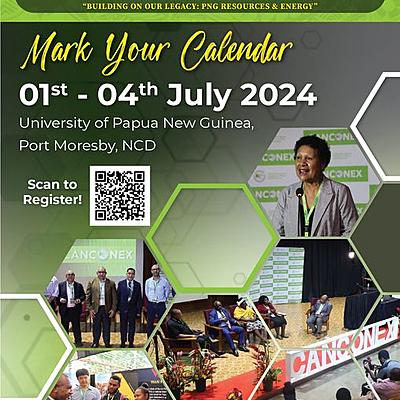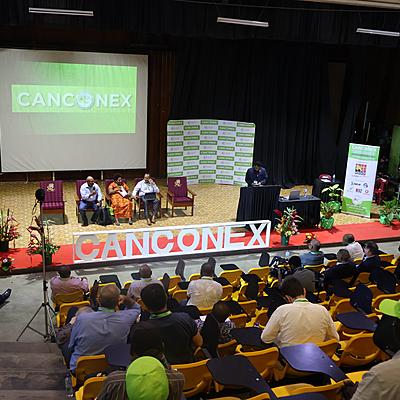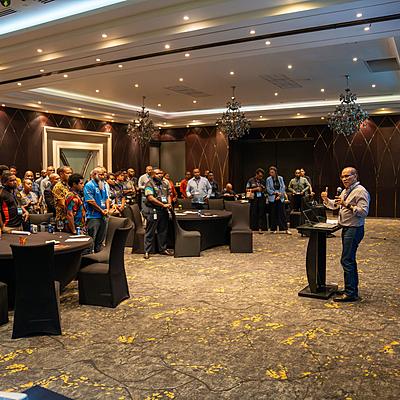Latest News
Trending News
The Papua New Guinea Chamber of Resources & Energy (PNG CORE) recently welcomed two esteemed entities, Great Pacific Gold and Southern Cross Assurance Limited (SCAL), into its dynamic network.
Great Pacific Gold joins PNG CORE following its recent amalgamation agreement with Tinga Valley Copper & Gold Corp. to acquire a highly prospective PNG copper-gold project called the Tinga Valley. This marks a significant milestone in the Chamber’s expansion.
PNG CORE Chief Operating Officer Pansy Taueni-Sialis formally welcomed Great Pacific Gold to the Chamber.
“As the peak body for the mineral resources & energy sectors in Papua New Guinea, PNG CORE is pleased to have Great Pacific Gold on board to our growing network. Their recent acquisition not only enhances their potential but also enriches our collective efforts with invaluable insights and opportunities,” she said.
"We are excited to embark on this journey with Great Pacific Gold, fostering a partnership that promises substantial growth and shared prosperity. Welcome aboard!"
Similarly, SCAL’s entry as a service member heralds a new chapter in PNG CORE's commitment to fostering partnerships across various sectors.
SCAL is a PNG-owned company aiming to extend its reach into offering their insurance products and services to safeguard business operating in the resources and energy sector.
SCAL CEO Sri E Kalyanarangan emphasized that as a service member of the Chamber, the firm is excited with being a part of PNG’s leading industry peak body.
“Being a service member of PNG CORE will not only allow us to stay informed about industry trends and challenges but also enable us to establish meaningful connections that can contribute to the growth of our business and the industry we serve. We have been operating in the insurance industry for more than 10 years now and we can offer technical expertise to manage the complex risks that exist in the mining and resources sector,” he said.
“Our membership to PNG CORE builds on this and provides an avenue for us to engage more closely with the mineral resources and energy sectors.”
PNG CORE Team Leader Member Services, Edith Baimur, in welcoming SCAL, reaffirmed the Chamber’s commitment to working closely with the insurance provider, for mutual benefit.
"As a member of PNG CORE, SCAL will gain valuable insights into the latest trends and issues of the resources and energy sector. This will enable SCAL to strategically plan and adapt their business to meet the evolving demands and capitalize on opportunities within this thriving sector."
“We look forward to a brighter future, together.”
Mining Minister Honourable Muguwa Dilu, has urged all landowners, impacted communities and stakeholders of the Porgera Mining Project, to fast-track the Community Development Agreement (CDA) process so that they could start receiving benefits.
The Minister was speaking in Tari on Friday April 26, where he addressed the Hides-Porgera Power Line landowners of the Porgera Mining project.
He said the Porgera Mining Project was a priority of the Marape-Rosso Government, adding that the government wanted to ensure that the mine goes into full operations immediately.
The meeting with the power-line landowners was the final one of a series of pre-CDA meetings, which the State Team has been conducting in the last few months, involving all landowners and stakeholders. The aim of pre-CDA meetings has been to provide the State’s response to the position papers, create awareness, clarify issues, prepare landowners and respond to specific pre-dominant agendas presented in position papers submitted by landowners and stakeholders.
The next step is to launch CDA proper in the coming weeks, after which, all parties and other stakeholders will convene at a venue to be announced soon, to negotiate benefits through the CDA process. Minister Dilu recently announced that the CDA proper would be held in May 15-30-2024.
The Minister told the power line landowners: "Yumi mas stretim olgeta hevi na wari blong yumi before long end of May-June."
He said all landowner groups were important stakeholders of the project, and that the government would ensure their position papers were considered.
He urged them to cooperate with the State Team and quickly find ways forward to addressing their positions on major potential benefit streams available to them such as equity and Business Development Grants.
He reminded the landowners however, that there were laws and policies governing the potential acquisition of benefits. He said the State would not negotiate benefits outside of laws and asked for understanding from landowners and stakeholders.
The Minister was accompanied to the meeting in Tari, by the Governor for Hela Province, Honourable Philip Undialu and the Managing Director of the Mineral Resources Authority (MRA) Mr Jerry Garry, who joined the State Team that had gone to Tari earlier in the week to conduct pre-CDA meeting.
Governor Undialu said his government and his people supported the Porgera Mining project. However, he urged the State Team to clearly define the various benefit streams and how exactly his government and his people would benefit, taking into account the various laws and policies that govern benefits distribution. His landowners expressed the same sentiments.
Papua New Guinea Prime Minister Hon. James Marape has emphasized his intention to engage in discussions with Japanese Prime Minister Hon. Fumio Kishida regarding the Papua LNG project.
During a recent presentation on April 30th, Prime Minister Marape expressed his desire to formally extend invitations to Japanese contractors for bidding on the construction of the project.
The announcement came as PM Marape accepted an invitation to attend the 10th Pacific Islands Leaders Meeting (PALM 10), scheduled to be held in Tokyo from July 16th to 18th, 2024, alongside Prime Minister Kishida.
During a small ceremony, Special Advisor to the Japanese Prime Minister, Mr. Hitotaka Ishihara, hand-delivered the official invitation to Prime Minister Marape.
Top on their agenda in the discussion between PM Marape and Mr Ishihara was the mutual desire for both leaders to hold a bilateral meeting on the margins of PALM 10.
PM Marape also expressed appreciation for Japan’s ongoing support and assistance to PNG's development efforts.
Since 1997, Japan has been hosting PALM meetings every three years, providing a platform for leaders from Pacific Island countries and regions to exchange views on regional issues.
This year's meeting will focus on strengthening cooperative relationships and addressing common challenges, including those related to small size, land distribution, distance from major markets, and vulnerability to natural disasters and climate change.
PM Marape has accepted the invitation and looks forward to meeting Prime Minister Kishida, expressing gratitude for the opportunity to further strengthen ties between Japan and Pacific Island countries.
Representatives from the 18 Pacific Islands Forum (PIF) members, including PNG, Cook Islands, Federated States of Micronesia, Fiji, Kiribati, Marshall Islands, Nauru, Niue, Samoa, Solomon Islands, Tonga, Tuvalu, Vanuatu, French Polynesia, New Caledonia, Australia, and New Zealand, will be in attendance.
In the ever-evolving development sectors of sustainable energy, mastering the installation of solar energy systems is both a skill and a necessity. With advancements and innovations occurring at a rapid pace, being informed with developments are crucial for companies in the electrical and solar industry.
The Sustainable Energy Industry Association Papua New Guinea (SEAP) recently hosted a pivotal workshop in partnership with the Sustainable Energy Industry Association of Pacific Islands (SEIAPI) and the United States Agency for International Development PNG Electrification Project (USAID-PEP).
Held on the 5th of April at the USAID-PEP office in Port Moresby, the event titled “SEIAPI/SEAP/USAID-PEP Solar Standards Workshop” brought together 60 participants from solar and electrical companies, government agencies, international donor organizations, and academia.
The USAID-PEP Chief of Party Bruce Corbet highlighted the importance of mini-grids and small-scale electrification in achieving PNG’s electrification goals.
Mr Corbet said, “This is one of the steps we are taking as more people join. And it is really important, this message, ‘that mini-grids and small-scale electrification is a fundamental part of electrifying Papua New Guinea’ and achieving the government’s goal of that 70% access target by 2030.”
He emphasized the necessity of partnerships and capacity development for such initiative.
USAID-PEP seeks to enable the creation of PNG’s mini-grid development industry. The workshop is for capacity development, including an opportunity to network with potential partners in the industry.
The workshop lasted 1 hour and 30 minutes and participants were immersed with information and knowledge, guided by a “Standards Presentation,” followed by a question-and-answer session and a few minutes of industrial networking.
The workshop, held both in person and online by Zoom, served as a platform of knowledge and collaboration, shedding light on solar energy installation.
SEIAPI Executive Officer, Geoff Stapleton, a distinguished pioneer of the Australian solar industry, led the workshop with commendable expertise and insight.
In collaboration with SEAP and USAID-PEP teams, Stapleton’s presentation delved deep into the topics such as design and product standards, solar energy standards, safety practices, and installation techniques.
The presentation focused on critical standards and guidelines regarding solar photovoltaic (PV) systems, with a specific focus on design, installation, and product standards.
Stapleton also provided a comprehensive overview of essential standards. From AS 4509.1:2009 to AS/NZS 4777.1:2016, each standard was explained with a visual guide, emphasizing its significance and implications for solar designers and installers.
Stapleton’s pivotal role in the development and refinement of solar industry standards was evident, showcasing his expertise and commitment to ensuring installation practices and safety measures are carried out during installation based on both specification and requirements.
The workshop's agenda covered a broad spectrum of topics, ranging from stand-alone power systems to grid connection requirements.
Attendees also participated in the presentation by discussion, which they gained insights into system designed complexity, safety requirements for PV (photovoltaic) arrays or solar arrays, and electrical installations involving battery systems.
Moreover, the presentation highlighted the inter-relation between various standards, emphasizing their collective role in ensuring the safety and effectiveness of solar energy systems.
One of the workshop's key takeaways was the importance of compliance with industry standards. With safety being a paramount concern, adherence to standards such as AS/NZS 5033:2021 and AS/NZS 5139:2019 is imperative for companies operating in the electrical and solar industry.
In addition, the workshop underscored the critical role of training and recognition schemes in fostering a culture of excellence and professionalism within the industry, especially in an industry where precision and compliance are paramount.
AgResearch is keen and ready to partner the National Agriculture Research Institute (NARI) of Papua New Guinea (PNG) to help develop the agriculture sector of PNG. AgResearch is one the seven Crown Research Institutes in New Zealand responsible for delivering innovative science and research outcomes specifically for the agricultural sector. In their meeting with the Minister for International Trade and Investment, Hon. Richard Maru in Hamilton, New Zealand, AgResearch said they were happy to partner NARI to provide research training and internships for Papua New Guinea agriculture scientists and graduates.
Minister Maru said: “AgResearch has been providing training internships routinely through similar arrangements with their partners and they are keen to do the same with PNG through a partnership with NARI. They are happy to work with the PNG Government and NARI to formalize this partnership.”
Minister Maru further stated: “We want to build our dairy industry to become a dairy producing nation, but we have no expertise. New Zealand has all the expertise and experience and are renowned globally in this space and that is why we want our agriculture scientists and graduates to come to AgResearch to be trained so they can learn from them and return to PNG to build our own industry.”
“This will be the start of our journey to building a serious agriculture relationship with New Zealand,” Minister Maru added.
Papua New Guinea took a significant stride towards sustainable economic development with the inauguration of the Green Finance Centre (GFC) in a collaborative effort spearheaded by the Bank of Papua New Guinea (BPNG) and the Global Green Growth Institute (GGGI).
The move aims to revolutionize PNG's financial sector by integrating green finance principles into its core operations.
Other key partners include the Centre for Excellence in Financial Inclusion (CEFI), the Department of Climate Change and Development Authority (CCDA), and the Alliance for Financial Inclusion (AFI).
The effort’s primary objective is to tackle environmental and climate change challenges in PNG through innovative and inclusive climate finance and green investment mechanisms within the financial and banking sector. This aligns with PNG’s commitment to achieving low-carbon, sustainable, and inclusive economic growth while addressing climate change risks across the country.
This landmark collaboration launched on 25th March at the prestigious Hilton Hotel, Port Moresby. Distinguished guests included Chief Secretary to the Government of PNG Mr. Ivan Pomaleu OBE, Conservation Environment & Climate Change Minister Hon Simo Kilepa MP, and the Governor of the Bank of Papua New Guinea Mrs. Elizabeth Genia, marked a pivotal moment in the nation's financial landscape.
The ceremony also witnessed the participation of key dignitaries, including the Minister for the Environment Hon. Simon Kilepa; Dr. Alfred Hannig, Executive Director for Alliance for Financial Inclusion (AFI); New Zealand High Commissioner, Peter Zwart; His Excellency Guillaume Lemoine, French Ambassador to PNG; and Mr. George Awap, Assistant Governor - BPNG.
At the heart of the initiative lies the Inclusive Green Finance Policy (IGFP), developed by GGGI and CEFI in 2021. With a generous funding of USD 670,000 from the New Zealand Ministry of Foreign Affairs and Trade (MFAT), under the Low Emission Climate Resilient Development Program (LECRD), the IGFP aims to integrate green finance practices into PNG’s financial landscape.
One of the highlights of the launch was the unveiling of the GFC's logo and website, symbolizing a new era of environmentally conscious and financial practices in PNG. The steering committee, chaired by BPNG, will guide the GFC in implementing the IGFP and leading future initiatives related to green finance flows in the country.
The signing of a Memorandum of Understanding (MoU) among BPNG, GGGI, and three financial institutions—Bank of South Pacific Group (BSP Group), Nationwide Micro Bank (MiBank), and Women’s Micro Bank (Mama Bank)—underlines the commitment to integrating the IGFP into their operations and development of green loan products.
The grant agreement signed between GGGI and Agence Française de Développement (AFD) further solidifies international support for PNG's green finance agenda. With a six million Euros grant, PNG through the GFC will receive one million Euros to support the ongoing work of IGFP implementation and an additional 1.8 million Euros for designing and capitalizing of a Green Refinancing Facility (GRF).
In his keynote remarks, Chief Secretary Mr. Ivan Pomaleu OBE hailed the establishment of the GFC as a bold step towards greening PNG's financial sector, emphasizing the importance of promoting low-emission options to combat climate change impacts.
“In line with the government’s mandate, the Green Finance Centre will strongly advocate for banks to channel loan investments in sectors such as agriculture, energy, SMEs and bioeconomy to promote low-emission options to reduce our carbon footprint and lead by example in the region and globally, demonstrating our commitment to addressing climate change impacts,” said Mr. Pomaleu.
Echoing similar sentiment, BPNG Governor Mrs. Elizabeth Genia reaffirmed the bank's commitment to promoting national financial inclusion and environmental sustainability, acknowledging the pivotal role of GGGI and CEFI in driving this initiative forward.
“The Bank of Papua New Guinea is committed to promoting national financial inclusion and the greening of the financial sector and the launch of the Green Finance Center underscores the commitment of all stakeholders involved to drive sustainable development and address climate change challenges through innovative financial mechanisms,” she added.
High Commissioner Zwart stressed the urgency of climate action and commended the collaboration between the New Zealand Government, BPNG and GGGI in establishing the Green Finance Center.
He said: “The New Zealand Ministry of Foreign Affairs and Trade is proud to provide funding for IGFP and collaborate with the Bank of Papua New Guinea and GGGI in establishing the Green Finance Centre which will play a crucial role in working with financial institutions to mobilize increased green lending and investments in Papua New Guinea.”
AFD Executive Director Mr. Philippe Orliange expressed support for the IGFP and the Green Finance Center, affirming AFD's commitment to replicating the success of greening PNG’s financial sector across the Pacific Region.
“Greening the financial system in PNG is crucial towards the fight against climate change and I am proud that France is happy to help PNG tackle this. PNG is a role model in the Pacific, and we wish all the best to the team involved,” he added.
The launch of the GFC aligns seamlessly with BPNG - CEFI’s Third National Financial Inclusion Strategy (NFIS 3) (2023-2027) and PNG’s climatic goals outlined in PNG Vision 2050 and Medium-Term Development Plan IV (2023-2027), highlighting the integrated approach towards sustainable development.
Papua New Guinea Minister of Tourism, Arts and Culture, Hon. Isi Henry Leonard recently welcomed distinguished guests from China, PNG, and stakeholders for the first China Ready Workshop held on the 25th April at APEC House-Port Moresby.
“Your presence here signifies our vision for a vibrant future in tourism and business between Port Moresby-PNG and China,” Minister Leonard said in his opening remarks.
China Ready is a global accreditation system that certifies a product or service that can be trusted by a Chinese consumer. This internationally recognized system is being rolled out in PNG’s capital among affiliated members of the tourism industry.
PNG is the 51st country across six continents to adopt this program, representing 25 percent of global destinations.
The workshop is organized by the PNG Tourism Promotion Authority (PNGTPA) and the National Capital District (NCD) Governor’s Office in close partnership with the Government of China.
It is an exclusive event, initiated to prepare Port Moresby’s tourism industry and its stakeholders for the opportunities the Chinese market offers.
The workshop included the latest market updates, insights into the post-COVID-19 Chinese traveler, effective strategies to take on the fast-evolving Chinese market, and tap into its vast potential. Areas ranging from transportation and accommodation to entertainment and services highlight the diverse opportunities awaiting the city, as the government and stakeholders prepare to welcome Chinese tourists.
Participants gained valuable knowledge on post-COVID Chinese tourist demographers, behavioral changes, the rising trend of Free Independent Travellers, effective communication strategies with Chinese partners, destination selection criteria, target strategies for Chinese travellers, and marketing PNG’s unique culture and natural beauty.
Participants in the workshop included:
Government officials from tourism departments and ministries
Cultural organizations and heritage sites representatives
Local tourist boards and associations
Hotels and accommodation representatives
Tour operators and travel agencies
Transportation providers (airlines, railways, bus companies)
Restaurant and food services businesses
Attractions and touristic sites management
Retailers and souvenir shops
Tourist guides
Emergency services and healthcare providers
Agencies for safety and security briefing
Marketing and public relations professionals for destination promotion
Hospitality training institutes and professionals for service improvement.
In his speech, Hon. Leonard said: “We will work closely with our stakeholders to enhance Port Moresby’s image, correct misconceptions, and strengthen our ties with Guangdong Province.”
“It is time that PNG joins other Pacific nations that have benefited through this China Ready approach. it is evident in their success stories of countries like Samoa, which has experienced significant increase in Chinese visitation numbers and tourism growth after adopting the China Ready principles. Let us seize this opportunity to build strong partnerships, enhance our city’s appeal, and pave the way for sustainable growth and mutual prosperity.”
More than 60 participants got certified, including air service providers, car rental companies, clothing retail outlets, and received their certificates after completing the China Ready workshop.
NCD Governor Hon. Powes Parkop reiterated the significance of making Port Moresby and PNG China Ready “to tap into and harness this potential of tourism.”
“The National Government through the Minister adopted the strategic plan and now it’s up to all of us to roll the strategy out. We must recognize and understand that, Tourism is a sleeping giant,” he said.
Hon. Powes emphasized the products of tourism that PNG can offer. Port Moresby, as the nation’s capital, is a hub of more than a thousand tribes and cultures, a diverse country that is rich with language. PNG owns one-third of the world’s rainforest, which is a tourist product in itself, he added.
The China Ready Workshop follows the recent establishment of direct flights from Guangzhou, China to Port Moresby by China Southern Airlines, fueling the expected increase in tourism in the coming months.
PNGTPA’s CEO Mr. Eric Mossman Uvovo described the initiative as a historical milestone for the country, “where we position ourselves to welcome one of the biggest economies in the world in terms of tourism. The workshop was a pivotal moment for stakeholders and all of us to be ready for the outbound Chinese Market.”
The China Ready Program was established in 2002 and is the largest of its kind, ensuring destinations and service providers meet Chinese hospitality standards. It is operated by CBISN and exclusively issued by the China Outbound Tourism Research Academy (COTA). The program is endorsed by the Chinese Ministry of Culture and Tourism.
Dr. Marcus Lee, CEO of China Travel Online and facilitator for the China Ready workshop, provided insights into the program's objectives.
"Our primary objective is to enable Papua New Guinea to tap into the vast potential of the Chinese market. We've completed our audit, and the essence of the China Ready concept is to guide destinations and stakeholders on welcoming Chinese tourists. More importantly, it's about delivering services and products that meet Chinese standards," said Lee.
Lee encouraged the government to work closely with PNGTPA to make PNG China Ready. “I urge all stakeholders, including the government and PNGTPA, to implement the Insights gained to make Port Moresby and PNG truly China Ready,” he said.
Lee is CEO of China Travel Online, a leading China Outbound Travel portal on the China-wide web with over 100 destinations listed. The group consists of Technology, Media, and MICE, with officers across 10 countries in Asia and China. The portal reach 80% of the Chinese outbound travel trade.
He sits on board as Chairman of China SME Business Owners Association (ICIF) with 11,000 corporate members. Marcus speak 6 Chinese languages and is the author of the international bestseller “How to Outsmart China” featured by CNN, China Daily and Bloomberg.
In Part I, we read about the signs of oil and gas throughout Papua New Guinea that enticed many oilmen to look for large oil and gas fields over many decades, and we read about the first commercial oil discovery at the Iagifu 2-X well and how the Kutubu field was successfully developed. We now pick up the story where subsequent exploration wells found mainly gas fields rather than oil fields.
When Papua New Guinea realised that its petroleum endowment was not so full of oil, but was comprised substantially of natural gas resources, it was recognised that gas would be difficult to develop in the absence of any domestic gas demand from households, commerce, or industry, and all the more so being remote from the gas markets of other nations.
So, in 1992, the Government through the newly-established Petroleum Branch, commissioned a study on all the discovered oil and gas fields of Papua New Guinea. This work was conducted by the US firm, Scientific Software Intercom in collaboration with the officers of the Petroleum Branch and sought to assess the extent of the petroleum resources and reserves to proper and systematic standards of reserve reporting then published by the Society of Petroleum Engineers.
Based on summations of the reserves, an economic study was undertaken applying the then prevailing Papua New Guinea petroleum fiscal regime. The results were presented to the National Executive Council (the Cabinet) showing that if the production from the gas fields discovered to date were aggregated, there could conceivably be a commercially viable gas development based on the export of Liquefied Natural Gas (LNG) to East Asian markets, but more work would be needed to obtain better quantification of the gas field development costs and the construction costs of a LNG plant and export facilities.
The Government liked the idea of gas development and embarked on examining its policies for such and began fostering the notion of gas development. Economic and policy studies were conducted and extensive discussions between gas field owners and promoters ensued.
In 1995, the Government tabled a White Paper on Natural Gas Policy before the Papua New Guinea Parliament. The policy laid down the regulatory and fiscal terms that the Government was willing to consider for the encouragement of investment in gas development. Key features were the introduction of Petroleum Retention Licences (PRLs) to allow the companies to keep their discoveries beyond the period of tenure provided by a normal Petroleum Prospecting Licence. This would be allowed in consideration of an acceptable programme of gas field appraisal and delineation, conduct of commercial studies and development promotion by the licensees. So long as a field was currently not commercially viable, the PRLs would allow retention for up to 15 years.
The gas policy also introduced a single ring-fence for the field development, gas pipeline infrastructure, LNG Plant and marine facilities. And based on considerable economic modelling, the Government landed on a concept of 50/50 sharing of the net value between the developer and the Government. The income tax rate for gas operations was set to 30% of net profits and the State decided it would keep its right to take up to 22.5% equity in the entirety of any development, including the LNG plant and associated facilities. Royalty rates were left at 2% of the wellhead value.
With the foundations for the gas development defined by the revised gas regulatory and fiscal regime, Exxon and BP pursued their LNG development plans based on the large Hides gas field with notions of taking the gas to the Papua New Guinea north-coast and a deep water plant site at Madang. However, these plans faltered due to the Asian financial crisis in 1997 and the consequent sudden reduction in East Asian LNG demand and the terrible tsunami that occurred in 1998 at Aitape on the north coast. An account of the tsunami was made by Prof. Hugh Davies of the University of Papua New Guinea in his book Aitape Story published in 2007. He attributed the devastating waves to movement on a sea floor fissure arising from a 7.0 magnitude earthquake. That movement caused a slump of seabed bottom sediment which would have generated the wave.
The tsunami demonstrated that whilst placing any LNG facilities nearer to markets, any north coast-located LNG facility would have to be built to much more exacting standards to cater for the additional seismic risk, as compared to the south coast. The Petroleum Division, mindful of the seismic hazards of the New Guinea part of Papua New Guinea, had earlier commissioned a Papua New Guinea Seismic Hazard Study, prepared by Dr Horst Letz, a renowned seismologist, which was completed around the time of the tsunami. It clearly defined the risk and indicated that a southern coast location for a LNG plant and facilities would be preferable.
The story of the tragic Aitape tsunami and its aftermath are told by Prof Hugh Davies in his 2007 book: the Aitape Story.
When the amendments to the Petroleum Act were being prepared for gas development pursuant to the 1995 Gas Policy, the results of policy studies on landowner benefits (both royalty and equity sharing), strategic access to pipelines and processing facilities and elementary domestic gas business provisions became available, and an effort was made to incorporate these matters into the amendments.
The Government was intent in providing statutorily defined benefits to communities hosting any future oil and gas development together with a proper process of consultation and liaison with communities. For such benefits, the Government devised the idea of a separate Development Agreement between the community parties and the State, which would be agreed in a formally convened Development Forum after proper research had been made as to land matters through the conduct of social mapping and landowner identification studies carried out by the licensees.
Significant and specific political lobbying arose from the Southern Highlands Province (home to the major oil and gas fields) for the Government to consider making a separate Gas Act for gas operations. In the resulting compromise, the Government agreed at the political level to introduce some of the reforms suggested by the Province, but only if the Act would remain intact, though it was now agreed that the new Act would be rebranded as the Oil and Gas Act, whilst still referring to petroleum for the most part.
Thus, the Oil and Gas Act, No 49 of 1998 was born. It represented a major restatement of the former Petroleum Act, covered much new ground and paved the way for improved participation by communities and their sharing in benefits.
The cover of the Oil and Gas Act, 1998 consolidated to 2007, though there have been many more amendments since. This copy is battered and torn due to extensive use by the writer!
Later, BP withdrew from Papua New Guinea and took their ideas about Papua New Guinea LNG development to West Papua in Indonesia where they successfully launched the Tangguh LNG Project. Then, Chevron, realising that they were handling increasing volumes of associated gas in their operation of the Kutubu oil fields, re-injecting as much as 400 million standard cubic feet of gas per day bought out the commercial notions that the International Petroleum Corporation (the early Lundin company) had about developing their offshore Pandora gas field in the Gulf of Papua, and sending that gas to Townsville in Queensland, Australia to supply a 200-megawatt power plant.
A period followed when all development notions were focused on transmitting gas to Australia from the producing oil fields, plus the undeveloped gas fields. With Kutubu oil production declining, Chevron departed the venture, selling its Papua New Guinea interests to Oil Search and over the course of several years, the schemes waxed and waned.
The Papua New Guinea Gas Project, alias Papua New Guinea Gas to Queensland Project or Gas to Australia Project ended up with over 4,300 kilometres of trunk gas pipelines and lateral pipelines hanging off the Papua New Guinea gas sources. Most of that infrastructure was in the north-eastern quadrant of Australia and was to be expensed against the supply of gas to a wide and quixotic range of Australian gas customers.
With low gas prices, high steel prices and the emergence of coal seam methane development notions in Australia, finally it was realised that Papua New Guinea might end up giving its gas away for nothing and that the only value For Papua New Guinea might remain in the natural gas condensates extracted in Papua New Guinea. The Papua New Guinea Gas Project for the supply of gas to Australia thus failed.
An abrupt turn was made to change all the development ideas toward supplying a LNG plant to be located on the Papuan South coast and an effort made to market the gas as LNG to East Asian markets. The dependence on external infrastructure and specific gas demands in Australia was also not seen as either politically attractive or sustainable. Thus, was born the Papua New Guinea LNG Project, more familiarly known as the PNG LNG Project.
PNG LNG has many factors in its favour as a distinct source for LNG for supply to East Asian markets. Papua New Guinea is a non-aligned Christian nation; it is not an Islamic nation. Papua New Guinea is desirous of investment and keen for development based on commercial oriented fiscal terms. Papua New Guinea as a nation has open-ocean access from its shores to customers and does not rely on any strategic straits. It has a Westminster-style Government and observes the principles of law and contract.
Papua New Guinea is favourably positioned to supply the Australasian region, but can reach out to serve Asian, Pacific and American markets. With diminishing oil production and the absence of new oil finds, Papua New Guinea’s explorers needed to capitalise on prior exploration investments that failed to find oil. Gas in the new century was no longer a hindrance and could be profitably developed even extending the life of the oil fields.
The PNG LNG project was projected to export LNG at a heating value of 1,135 BTU/SCF gas and the liquids were forecast to sell at US$ 60/barrel. Anticipated LNG prices were: US$ 8.07 per MSCF: equivalent to US$ 10.20 per MMBTU, or US$ 9.69/GJ.
The original plant design was upgraded early on from.6.3 million tonnes per annum to 6.9 million tonnes per annum for production over a 30-year period. Gross income was estimated to be ~ US$ 74.3 billion. Even at US$ 50/barrel oil, the project was still forecast to yield US$ 61.9 billion in LNG sales. The gas is rich in natural gas liquids, so at just 20 BO/MMSCF, some 210 million barrels of natural gas liquids were forecast to yield an additional US$ 12 billion of sales revenue.
The PNG LNG Project at Caution Bay about 20 kilometres north-west of Port Moresby
And so, in May 2014, Papua New Guinea became an LNG exporter, and is now producing about 8+ mta LNG per annum to customers in China, Japan and Taiwan - well above the original nameplate capacity of the LNG Plant. It got there because of fine operatorship on the part of ExxonMobil of a coherent joint venture. ExxonMobil was able to market the gas to top quality customers and obtain superior project financing.
The only major disappointment has been the collapse several times in the crude oil prices below projections, and hence the LNG prices due to the indexing with crude oil. For the first year, some elevated prices were obtained, but clearly the fall of crude oil below US$ 30 per barrel in 2015 hurt the project economics, as did the see-sawing of prices in the aftermath of the Covid pandemic when prices plummeted to less than US$ 3 per MMBTU only to soar to over US$ 60 per MMBTU later. The markets have calmed down now.
Access to lands for the project development came with resounding landowner consent after an enormous development forums were held at project level in Kokopo in New Britain and at licence level in each licence area. During the forums, the sharing of the benefit streams of the 2% royalty, 2% free equity from the State, 2% development levy, and other project grants including business development grants and infrastructure grants were discussed.
Oddly, whilst some grants have been paid, some of the royalties and equity benefits have yet to be distributed due to some remaining uncertainties about landownership, and/or challenges based on rivalry. But notwithstanding this situation, the landowners have been extremely patient and have remained stoical. Indeed, the landowners have negotiated with the Government for the vendor financing of additional equity in the PNG LNG Project of about 4.2% that was promised to them in the main development forum in Kokopo. These equity holdings will be most valuable once the project finance has been paid down. The fact that the landowners see that value, needs to be recognised.
What is next? There are plans for additional LNG trains being added to the existing location for further LNG output.
In 2008, a significant gas discovery was made at the Elk-4 well of InterOil Ltd drilled in the Gulf Province. This was appraised by further drilling and the reservoir intersected in this well shown to be part of a much larger and better-quality reservoir by the drilling of the nearby Antelope 1 well. Gas reserves of this field are estimated to be about 6.2 TCF (equivalent to about 1.2 billion barrels of oil). InterOil was a small entrepreneurial company with little experience, and whilst they tried to consider developing what became known as the Elk-Antelope gas field, they eventually sold down their assets to major international companies – Total of France and ExxonMobil of the USA, and to Papua New Guinea’s local oil and gas company – Oil Search, which merged with Santos in December 2021 in a $22 billion deal.
The Antelope 2 appraisal well was tested by then licensee and operator, InterOil Ltd at a record, if not astonishingly, high gas flow rate of 705 million standard cubic feet of gas per day in 2009 (after PNG BN).
Total, now rebranded as TotalEnergies, is the operator of the Papua LNG Project which seeks to develop this gas field separately, but in synergy with the PNG LNG Project. After considerable delays, finalising a Gas Agreement with the State, they agreed upon outstanding issues and are now very much resolved to proceed with the project. TotalEnergies, as operator, submitted their application for the licences required for the Papua LNG Project on 28th May 2023.
The Papua LNG Project will develop the Elk-Antelope gas field and transmit the gas by a new pipeline to the Caution Bay site occupied by ExxonMobil. There Total will have four new electric driven LNG processing trains built, each of 1 million tonnes per year capacity next to the current trains of the PNG LNG Project. It is planned to place the remaining gas through ullage within the existing LNG plant of the PNG LNG Project, owned and operated by ExxonMobil and its partners. The condensate would be exported through the Caution Bay site at a separate loading facility, whilst some existing facilities of ExxonMobil will be utilised such as the site utilities, camps and the jetty, and some will be upgraded for consequent greater use. The Papua LNG Project aims to produce about 6 million tonnes LNG per annum (mta).
The Papua LNG Project will produced gas from the Elk and Antelope gas field and transport it to liquefaction plant adjacent to the PNG LNG Project liquefaction plant (after TotalEnergies).
The FEED (Front End Engineering and Design) work for the upstream field facilities started in July 2022 and was awarded to French firm Technip Energies NV. The FEED work for the downstream LNG plant started in March 2023 and was award together with the Engineering, Procurement and Construction (EPC) contract to JGC Corporation in partnership with Hyundai Engineering & Construction Co., Ltd.
TotalEnergies has publicly confirmed that the project remains on track for a Final Investment Decision (FID) in 2024 with the first LNG production anticipated in late 2028/early 2029. The project is estimated to cost about US$12 billion and it is expected to expand Papua New Guinea’s GDP by 50%, or so. At present, there has been no announcement of project financing or LNG sales and purchase agreements that might underpin the project, though TotalEnergies remains confident, and perhaps a little, but appropriately, tight-lipped on such matters!
The shareholders in the project are TotalEnergies (operator) with a 40.1% stake; ExxonMobil (following the acquisition of InterOil in Feb. 2017) holding 37.1%; Santos Ltd. (following the acquisition of Oil Search Ltd in Dec. 2021) with 22.8%; while the Papua New Guinea government retains the option to exercise a back-in right for up to a 22.5% interest at the time of the grant of the project licences.
In an innovation of a kind, the development of the P’nyang LNG Project for which the Government has negotiated, agreed and signed a Gas Agreement with the companies is now planned to take place after the construction of the Papua LNG Project starting in 2028, and again lasting for about four years.
This project will not involve the building of any new liquefaction facilities, but will rather transmit its produced gas to the nearest trunk gas pipeline of the PNG LNG Project. The gas will then be transported by the PNG LNG Project for a commercially agreed tariff and delivered to the PNG LNG Project LNG plant where it will be tolled through the facilities and exported.
The P’nyang gas will therefore be what is known as “back-fill” gas for the PNG LNG Project LNG plant when it has already depleted and processed the gas from its project dedicated gas fields. P’nyang gas will therefore optimise gas throughput of the PNG LNG Project pipeline and facilities extending their life and making further income both for the companies and the Government. This obviates the need for new facilities and represents a significant capital saving.
The P’nyang LNG Project is estimated to cost about US$ 9 billion and seeks to develop about 4.4 TCF of gas reserves (about 860 million barrels of oil equivalent) and should extend the useful life of the PNG LNG Project facilities by about 10 years to around 2046.
Gas Agreement for the P’nyang gas field development is signed 23 February 2022
Gas development beyond what is described above depends on linking other discovered gas fields that are smaller and more remote to the infrastructure and the development of yet-to-be- discovered gas fields. Exploration density in Papua New Guinea is very low due to limited infrastructure and access to petroliferous areas, so one can reasonably anticipate that if exploration drilling is encouraged significantly more gas reserves might be identified.
With the combined processing capacity of the ExxonMobil-led PNG LNG Project (8.3 million tonnes per year) and the TotalEnergies-led Papua LNG Project (4 million tonnes per year), there will be an aggregate capacity to process 13.7 million tonnes of LNG per year (equivalent to about 300,000 barrels of oil per day).
Some have dared to talk that a LNG output of 20 million tonnes per annum is possible for Papua New Guinea in the foreseeable future. However, a few hurdles remain, primary amongst which is a lack of new wildcat drilling to find new gas fields, perhaps due to uncertain and undefined petroleum sector policy.
Papua New Guinea can still be successful in producing oil and gas well into the future, but it has to learn that it takes more than oil and gas reserves to create a viable and sustainable production industry. A review of its past successes should indicate what it needs to do. It has the natural gas resources in volumes enough to keep the current and planned trains filled, and perhaps more trains, but it must continue to be proactive in all aspects of gas development planning, promotion and participation. Importantly, the promised benefits to landowner in particular and to the wider public need to be delivered by the Government.
Any lapse into baseless self-indulgent or impractical schemes could readily spoil what is essential a very good framework for continued gas development investment, notwithstanding the plans to change the regime structure to one of production sharing. The future of PNG’s gas industry is firmly in the hands of the Government with excellent operators to assist it.
Ok Tedi Mining Limited (“OTML”) has donated K1 million to two provinces heavily affected by last month’s natural disasters.
OTML presented to East Sepik and Chimbu Provinces K500, 000 each to assist with relief and recovery efforts which are currently ongoing.
In East Sepik, persistent heavy rainfall led to flooding and widespread destruction in communities along the Sepik River, and was compounded by a 6.9 magnitude earthquake that struck the province.
In Chimbu, heavy rains and the earthquake triggered floods and landslides, destroyed communities’ food and cash crops and homes.
These disasters in both provinces have resulted in deaths, with many others unaccounted for, rendered thousands homeless, deprived them of food sources, safe drinking water, shelter, and severed access routes, making it challenging to reach affected communities.
On Thursday 24th April OTML Managing Director & Chief Executive Officer, Kedi Ilimbit, travelled to Wewak to present the funding to Acting Provincial Administrator, Alphonse Kami, in the presence of the Provincial Disaster Manager Mr Derek Warakai and others.
On Friday 25th April, OTML General Manager Social Performance & Sustainability, Jesse Pile, presented to the Chimbu Provincial Government the Company’s assistance to the provinces relief and recovery efforts. Present to receive the funding were Governor, Noah Kool, Deputy Governor, Anton Kua, Provincial Administrator, John Punde, District Administrators, and impacted communities’ representatives from the six districts of the province.
Mr Ilimbit said “As a 100% PNG owned mine, we believe we have a corporate social responsibility to provide support towards relief and recovery of our people and communities from East Sepik and Chimbu provinces.
“When disaster strikes, be it natural or manmade, lives are shattered, homes destroyed, and communities left reeling in the wake of devastation. The need for immediate aid is paramount and it is during these critical moments that our compassion and generosity provide hope to those in despair.
He added “Through this gesture we would like to see relief and aid delivered swiftly and effectively to those in need and for communities severely affected to be rebuilt.”
Ok Tedi Mining Limited (OTML) yesterday, presented a dummy cheque of K100,000.00 to the Mineral Resources Authority (MRA), to consolidate its position as a Major ‘Gold’ Sponsor of the MRA organized Geoscience, Exploration & Extraction (GEE) Conference 2024.
The conference will be held on August 7-9, 2024, at the APEC Haus, Port Moresby. This is the second time that the MRA will be staging this two-yearly conference. The inaugural conference was held in 2022.
OTML’s General Manager Social Performance and Sustainability, Mr. Jesse Pile, and Manager Corporate Affairs, Mr. Dexter Wagambie, presented the dummy cheque signifying the sponsorship, to the Patron of the GEE Conferences and Managing Director of the MRA, Mr. Jerry Garry. Mr. Garry when receiving the sponsorship, expressed the organising committee’s and the MRA’s gratitude towards OTML for its generous support to the event. He said that the contribution was very important in enabling the staging of the conference. Mr. Garry said the mining and the geoscience community in the country has not had a platform such as the GEE Conferences for the last two-three decades, where geoscience and engineering knowledge and ideas could be shared and discussed as learnings for the betterment of the industry as well as for the country.
“We have people who are doing research work in Ok Tedi, in their laboratory to overcome recovery problems, or overcome metallurgical problems. There are people who are working in different parts such as Kainantu. They maybe looking at different ore types and there maybe new findings. But there is no medium in this country to share those new findings and foster growth within the scientific community, and GEE is now the appropriate avenue to do that.”
The MRA MD appealed to other industry partners and stakeholders to support the conference.
Mr Pile said OTML as a state-owned entity felt that it was only proper to be in the forefront of the conferences like this. He said this is because GEE would contribute towards the development of PNG in terms of research and human resources development.
He said: “This contribution is building on from the very healthy relationship OTML has with MRA. From our observations, MRA is a leading organisation amongst other government authorities and agencies. The manner in which you run your organisation is professional, and Ok Tedi finds it fitting to work with your organisation, because of your professionalism. So this contribution is building on from what has been established over the years.”
The GEE Conference aims to bring together leading academics, scientists, researchers and geoscientists, to share experiences and share research results in geological exploration and mineral extraction. It will provide a premier inter-disciplinary platform for researchers, practitioners and educators, to present and discuss latest innovations, trends, concerns and practical solutions to challenges encountered throughout the business spectrum of the mining business. The conference will be the premier meeting place where stakeholders can connect and network with others in the field of geoscience, from learners to practitioners to decision makers. Presenters and participants will come from PNG and international based organizations as well as individuals, government agencies and Non-Government Organizations (NGOs).

